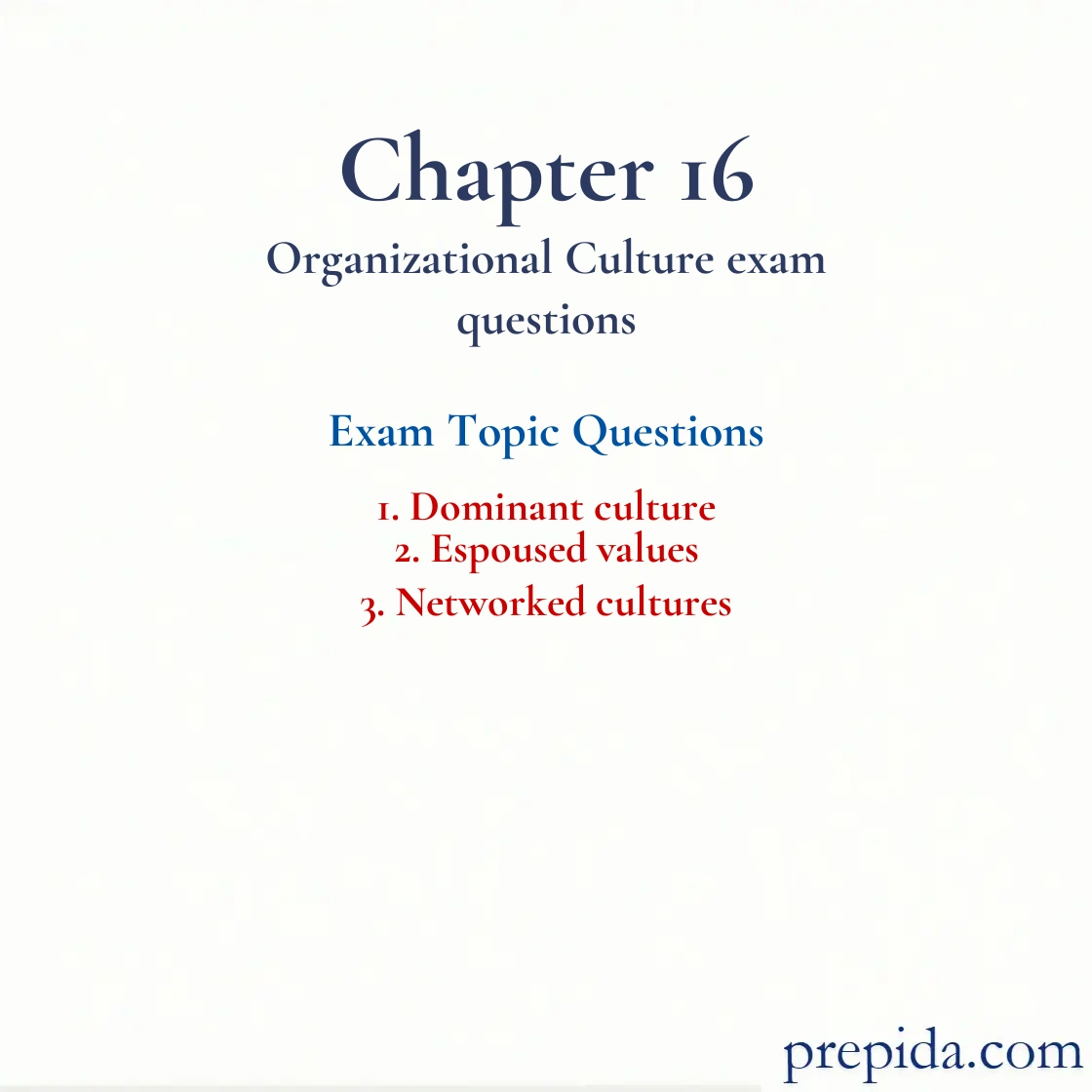
Most merged companies operate under a ________ for an extended period of time.
- strong culture
- weak culture
- subculture
- differentiated culture
- counterculture
Mergers rarely result in the strong culture that managers hope will appear when they make the decision to merge. In fact, most merged companies operate under a differentiated culture for an extended period of time.
Fragmented Culture: An organizational culture type in which employees are distant and disconnected from one another.
Mergers often result in the creation of the strong culture that managers hope will appear when they make the decision to merge.
Mergers rarely result in the strong culture that managers hope will appear when they make the decision to merge.
Culture: The shared values, beliefs, motives, identities, and interpretations that result from common experiences of members of a society and are transmitted across generations.
In practice, there are two major ways to change a culture. They are
- ASA framework and socialization.
- changes in leadership and mergers or acquisitions.
- ASA framework and changes in leadership.
- socialization and mergers or acquisitions.
- mergers and ASA framework.
In practice, two ways are common methods to change a culture: changes in leadership and mergers or acquisitions.
Culture: The shared values, beliefs, motives, identities, and interpretations that result from common experiences of members of a society and are transmitted across generations.
The published mission statement in any organization is an example of
- espoused values.
- stories.
- basic underlying assumptions.
- rituals.
- observable artifacts.
Espoused values are the beliefs, philosophies, and norms that a company explicitly states. Espoused values can range from published documents, such as a company's vision or mission statement, to verbal statements made to employees by executives and managers.
Espoused Values: The beliefs, philosophies, and norms that a company explicitly states.
Which of the following are the beliefs, philosophies, and norms that a company explicitly states?
- rituals
- stories
- ceremonies
- espoused values
- observable artifacts
Espoused values are the beliefs, philosophies, and norms that a company explicitly states.
Espoused Values: The beliefs, philosophies, and norms that a company explicitly states.
Walker International recently published its vision statement, which is an example of
- observable artifacts.
- stories.
- basic underlying assumptions.
- rituals.
- espoused values.
Espoused values are the beliefs, philosophies, and norms that a company explicitly states. Espoused values can range from published documents, such as a company's vision or mission statement, to verbal statements made to employees by executives and managers.
Espoused Values: The beliefs, philosophies, and norms that a company explicitly states.
Quest, Inc., has a sign hanging in every employee's cubicle that reads: "Together we are greater than any one of us." This is an example of a(n)
- ritual.
- espoused value.
- enacted value.
- basic underlying assumption.
- physical structure.
Espoused values are the beliefs, philosophies, and norms that a company explicitly states. Espoused values can range from published documents, such as a company's vision or mission statement, to verbal statements made to employees by executives and managers.
When a company holds to its espoused values over time, regardless of the situations it operates in, the values become less believable to employees.
When a company holds to its espoused values over time, regardless of the situations it operates in, the values become more believable both to employees and outsiders.
In organizations with networked cultures, we tend to find ________ sociability and ________ solidarity.
- low; low
- low; moderate
- high; low
- moderate; high
- moderate; low
Cultures in which all employees are friendly to one another, but everyone thinks differently and does his or her own thing, are networked cultures.
Networked Culture: An organizational culture type in which employees are friendly to one another, but everyone thinks differently and does his or her own thing.
Petunia, Daisy, Constance, and Anna are four friends working at four different organizations. In Petunia's firm, Social Network Development, employees are both distant and disconnected from one another, whereas in Daisy's company, Solar Singularity, it is quite the opposite-employees are friendly, and they all think alike. Constance works for Credit Protection Services, where employees think alike but are not friendly to one another. Finally, Anna is employed at Living Trust Wealth Management, where employees are friendly, but they think differently and do their own thing. Petunia's firm, Social Network Development, can be described as having which of the following culture types?
- communal
- mercenary
- networked
- fragmented
- collective
Organizations that are low on both dimensions (solidarity and sociability) have a fragmented culture in which employees are distant and disconnected from one another.
Fragmented Culture: An organizational culture type in which employees are distant and disconnected from one another.
________ cultures are those where all employees are friendly to one another, but everyone thinks differently and does his or her own thing.
- Communal
- Mercenary
- Networked
- Fragmented
- Complex
Cultures in which all employees are friendly to one another, but everyone thinks differently and does his or her own thing, are networked cultures. Many highly creative organizations have a networked culture.
Networked Culture: An organizational culture type in which employees are friendly to one another, but everyone thinks differently and does his or her own thing.